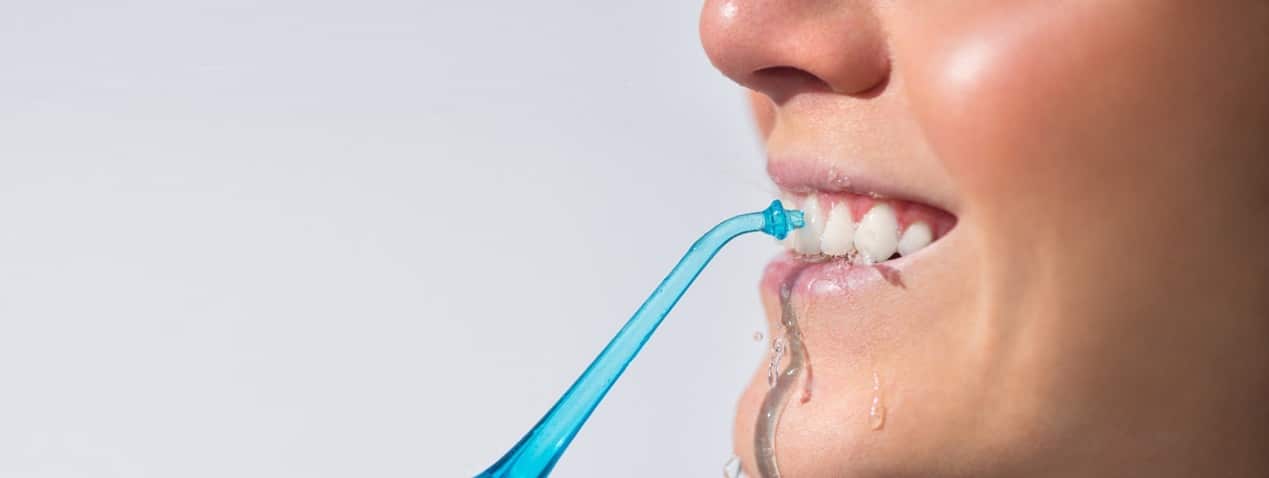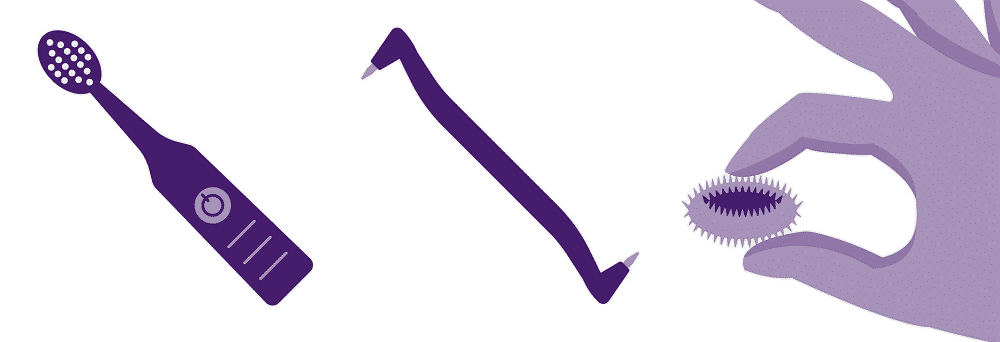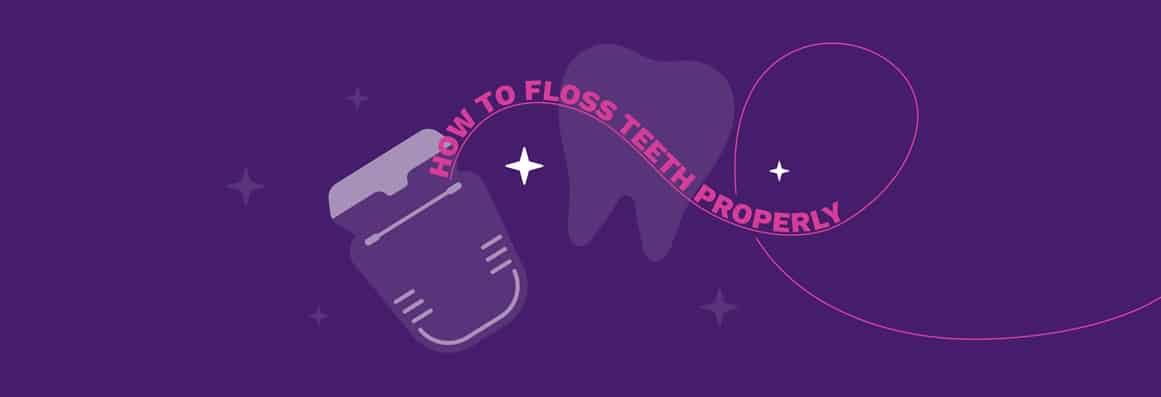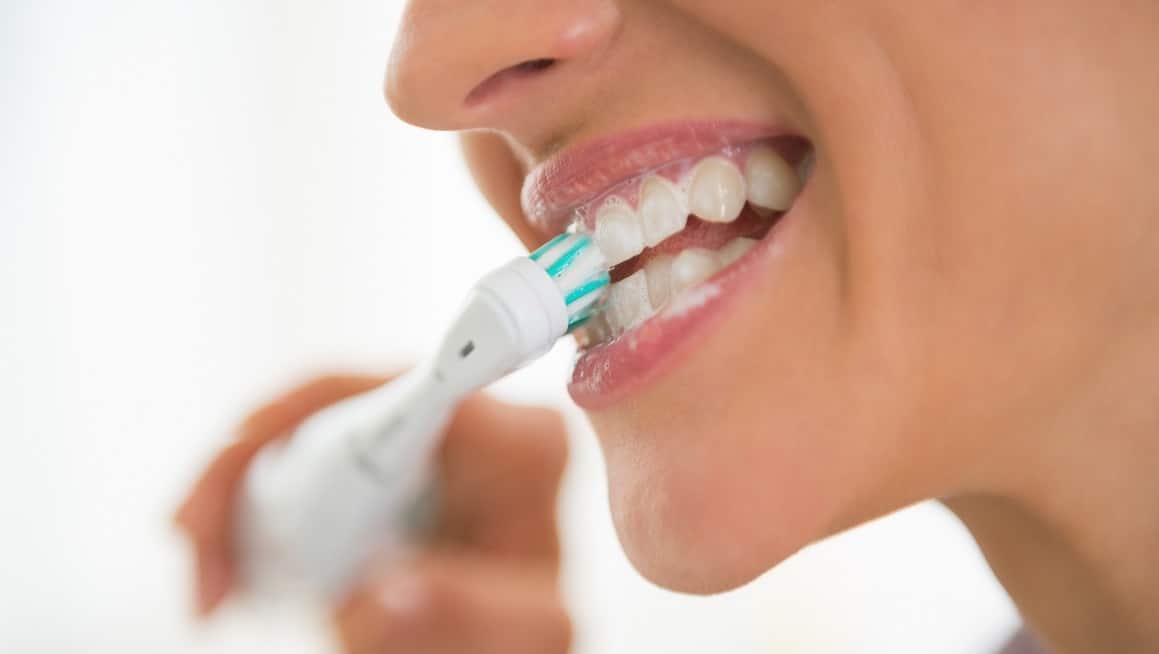Floss Types Unveiled: How to Choose the Right Ones
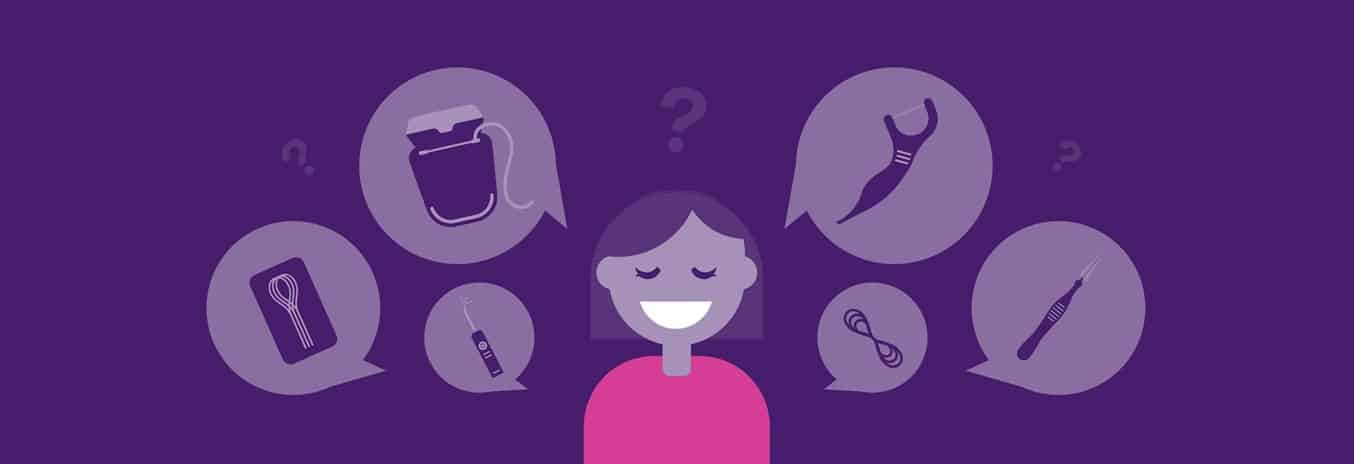
When most people think of dental floss, they usually think of running a piece of string or tape between their teeth to remove food and plaque their toothbrush can’t reach. But did you know there are many different types of floss out there that serve multiple purposes? Not only that, but you may not even realize you should use various types of floss to best clean your teeth and gums. Keep reading to learn about all the different types of floss available and which ones may be best for you.
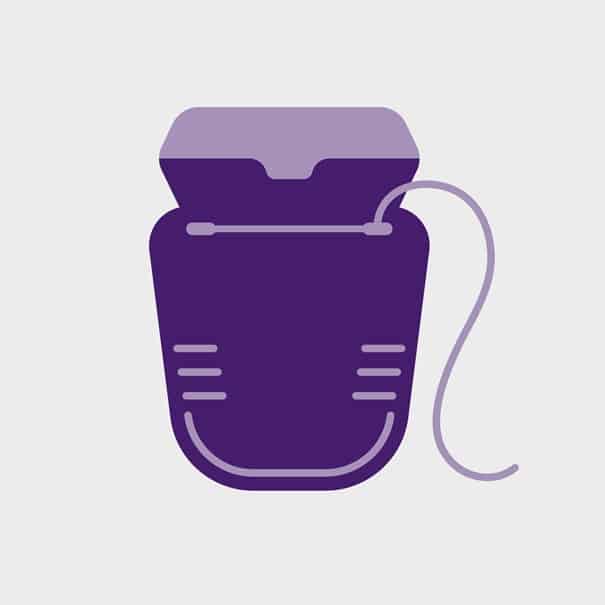
Dental Tape
This is what most people probably think about when they think of dental floss. Dental tape is also known as dental string, dental ribbon, and dental floss. There are many different types of dental tape, and everyone but those with dentures should use it. Deciding what type of dental tape to use comes down to personal preference and flossing technique, so we recommend trying several so you can choose the one you like best. If you need additional guidance, refer to our article on how to floss properly .
Most Common Types of Dental Tape
All Natural
This uses fewer chemicals than other dental tapes, and some all-natural tapes apparently decompose more quickly. All-natural tape could consist of various types, including waxed and flavored. Choosing all-natural tape is a matter of personal preference.
Waxed
Less likely to break than all-natural tape, the only downside to waxed is that it may be harder to run it through tight spaces because the wax coating makes the tape slightly thicker than unwaxed. On the other hand, the wax is designed to adhere to debris. This option is also about personal choice more than anything else
Unwaxed
Aside from being thinner than waxed tape, some sources say unwaxed tape has fewer chemicals and moves more easily in between teeth, but we believe waxed floss is more effective. However, if you find waxed floss to be too thick, then you may prefer unwaxed.
Woven/Braided
This tape expands when wet, and its spongelike consistency can attach to more particles. We think this works best for people who have larger spaces between their teeth.
Superfloss
This is an OralB product that is wider and more spongy than standard dental tape and is also better for those with larger spaces between their teeth.
Flavored
Just about any dental tape comes in a variety of flavors. Common ones are mint and cinnamon, but there are also some strange flavors, such as cupcake and pickle! Obviously, flavor comes down to personal choice.
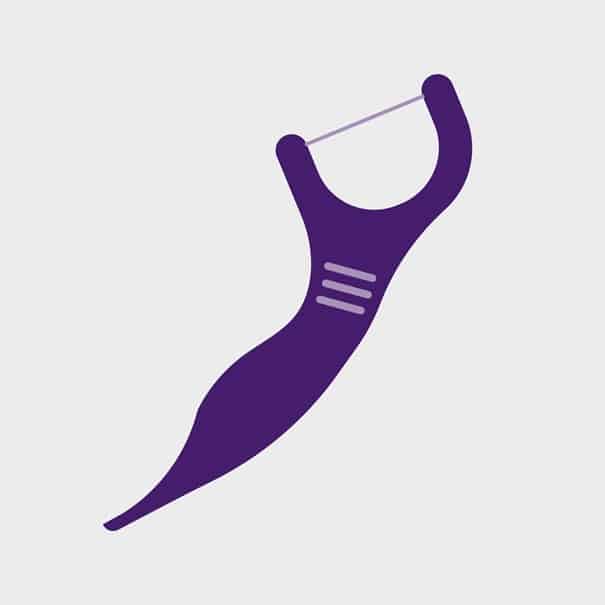
Floss Picks
These are an easier alternative to traditional dental tape and are best for children and older people who lack dexterity. Although they’re not as thorough as dental tape, they’re still much better than using nothing.
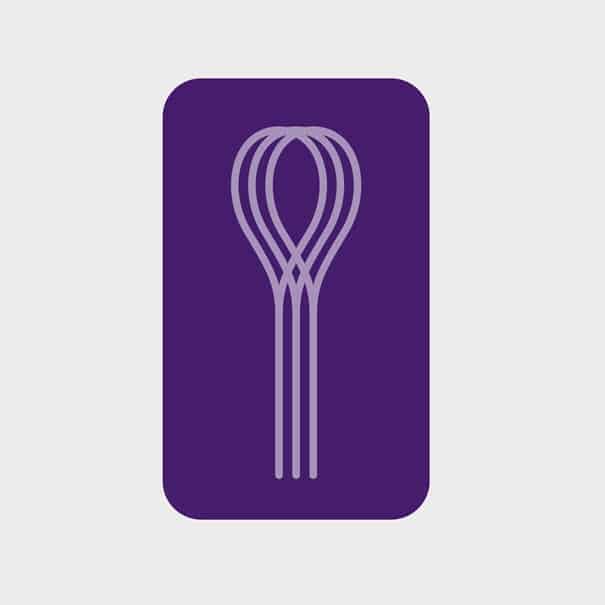
Floss Threaders
People with braces, bridges, and fixed retainers (a type of a permanent retainer as opposed to removable trays) use floss threaders as they clean areas challenging to reach with traditional flossing.
Although floss threaders are very practical for people with braces, bridges, and fixed retainers, they’re time-consuming, and people rarely comply with them. Therefore, we recommend using a Platypus or Proxabrush instead, which you can read about below along with more general options. A Waterpik is another excellent alternative, something that everyone should use and we also address below.
How to use a floss threader:
- Remove about 12 inches of dental tape from its holder.
- Insert approximately five inches of one end of the floss through the threader’s loop.
- Run the threader through your dental appliance and into gaps between your teeth.
- Remove the loop of the threader and floss normally by wrapping each end of the floss around each middle finger and using your thumbs and index fingers to maneuver it. Ensure your fingers touch both sides of your teeth, and curve the floss into a “C-shape” against the side of one tooth when the floss reaches the gum line.
- Repeat the process for each tooth.
- Remove a new piece of floss for every few teeth.
- Discard the threader after use, as they can’t be reused.
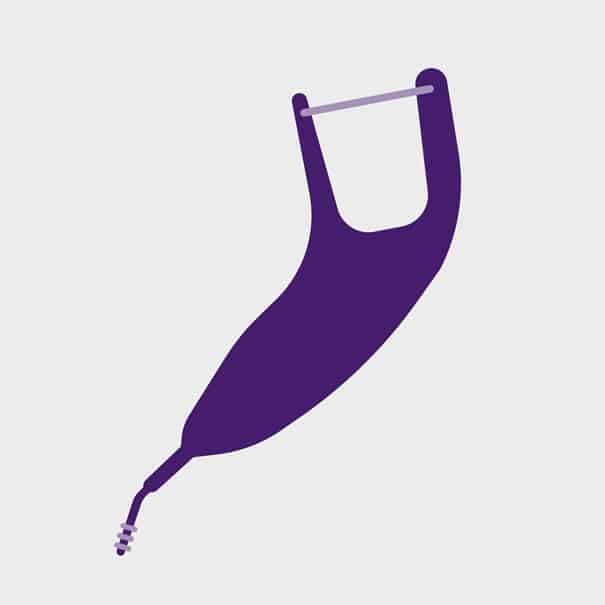
Platypus Ortho Flossers
Used by people with braces, the Platypus Ortho Flosser is similar to a floss pick, but one side is thin and flat to move it more seamlessly between your teeth and braces. This is much easier to use than a floss threader, and we recommend it.
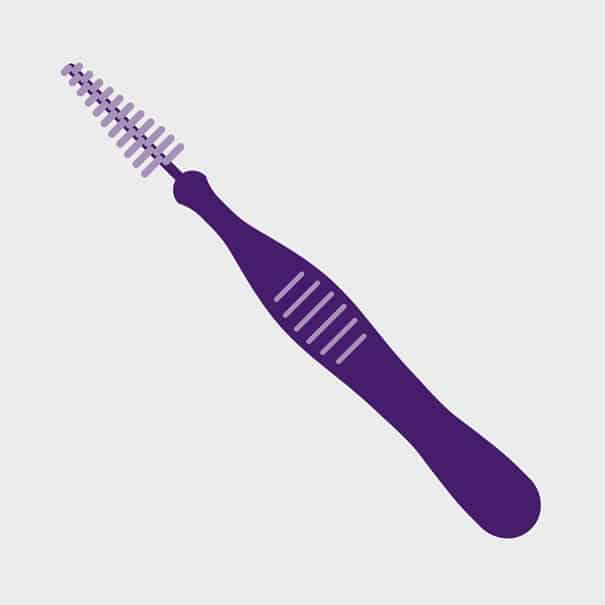
Proxabrush
Also known as an interdental cleaner, this device consists of a stiff brush you use to poke through gaps in between your teeth to clean them. Classified as either a toothbrush or flosser, a Proxabrush is much easier to use than a threader, and your dentist may suggest a Proxabrush if your dental tape alone isn’t doing enough to clean between your teeth.
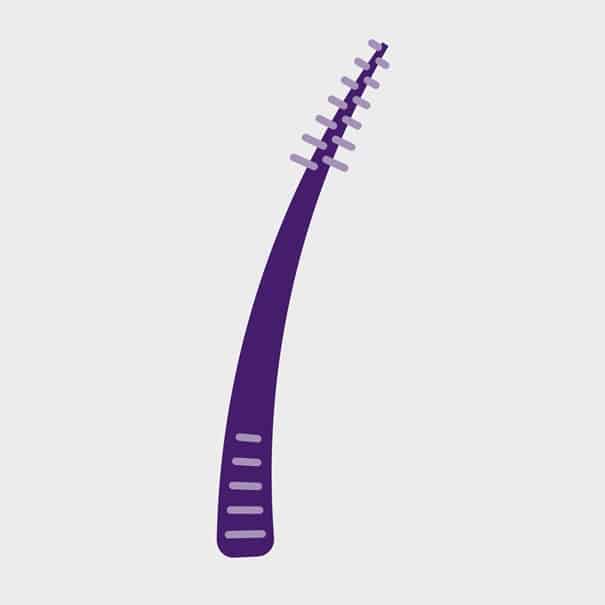
Soft Picks
Although similar to a Proxabrush, the bristles of a soft pick are made of rubber, the device is a bit thinner and better for tight areas, and it’s more compact for travel. As with the Proxabrush, you may be able to clean gaps well with dental tape alone, but your dental hygienist may recommend a soft pick if you can’t.
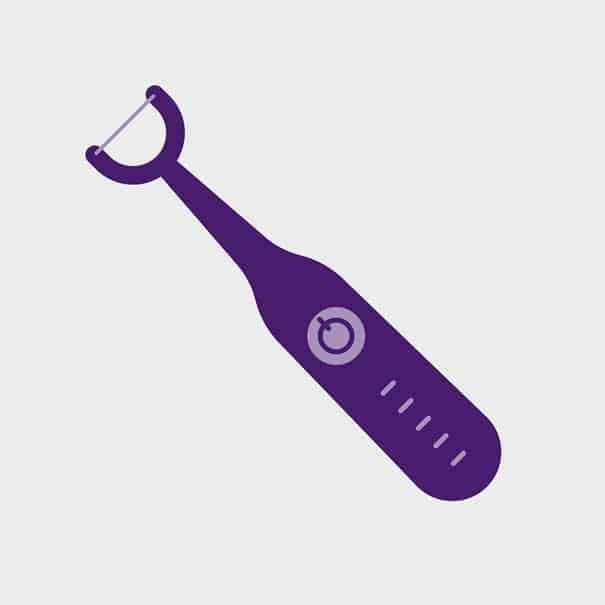
Vibrating Flossers
Also known as an electric flosser or electric vibrating flosser, a vibrating flosser is similar to dental tape but has a handle that vibrates. Our practice has not used them, but they’re supposed to be good. Furthermore, Waterpik has one they claim is clinically proven to be as effective as string floss. On the other hand, we believe string floss is better if you use the proper technique because you can maneuver it better than something with a handle.
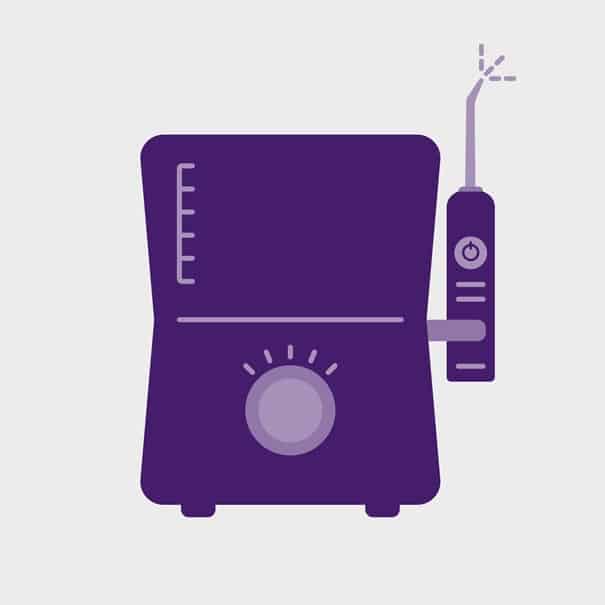
Water Flossers
This device relies on a stream of water to clean between your teeth and along teeth surfaces and gum pockets. Because they’re better at cleaning hard-to-reach areas that brushing and flossing can’t reach, we suggest that everybody use one. Learn why in our article on water flossers.
They can also come with a variety of tips (attachments) so you can get the best type for your mouth. For example, if you have braces, there is a tip that is designed specifically for orthodontics. We have an article about water flosser tips that lists each of Waterpik’s tips what they help with.
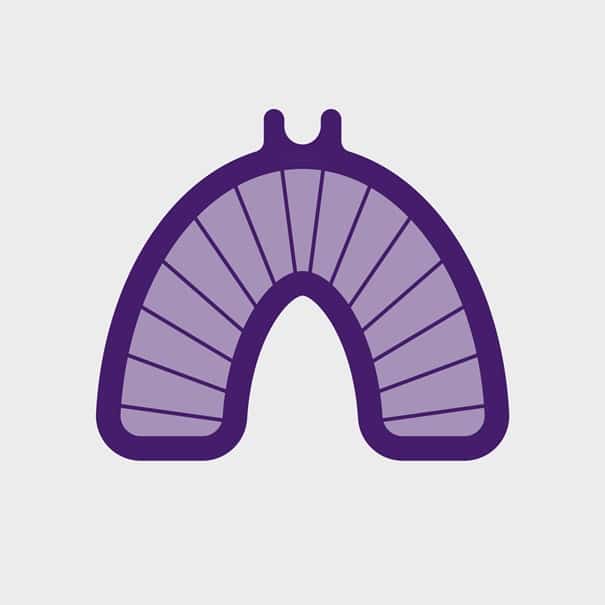
Blizzflossers
Chances are you’ve never heard of this one, but it’s a device that looks similar to a mouthguard with woven string throughout it. You place it in your mouth, and it flosses all your upper and lower teeth at once. However, there are several issues with this, including that the floss moves only in one direction: up and down. We think Blizzflossers are just a gimmick, and we suggest avoiding them!
Floss Types at a Glance
| Floss Type | Used by |
|---|---|
| Dental Tape | Everybody, except people with low dexterity or with dentures |
| Floss Picks | Those with low dexterity |
| Floss Threaders | People with braces, bridges, and fixed retainers |
| Platypus Ortho Flossers | Those with braces |
| Proxabrush | People with medium to large gaps in teeth |
| Soft Picks | People with small to medium gaps in teeth |
| Vibrating Flossers | People as an alternative to dental tape |
| Water Flossers | Everybody |
Summary
Although we barely scratched the surface with all the types of dental floss on the market, our coverage should give you a good sense of the best types of floss for your needs. Whether you’re searching for the perfect dental tape, wanting to incorporate a water flosser into your oral regimen, or wishing to complement dental tape with a Proxabrush or soft picks, there is no shortage of options!

